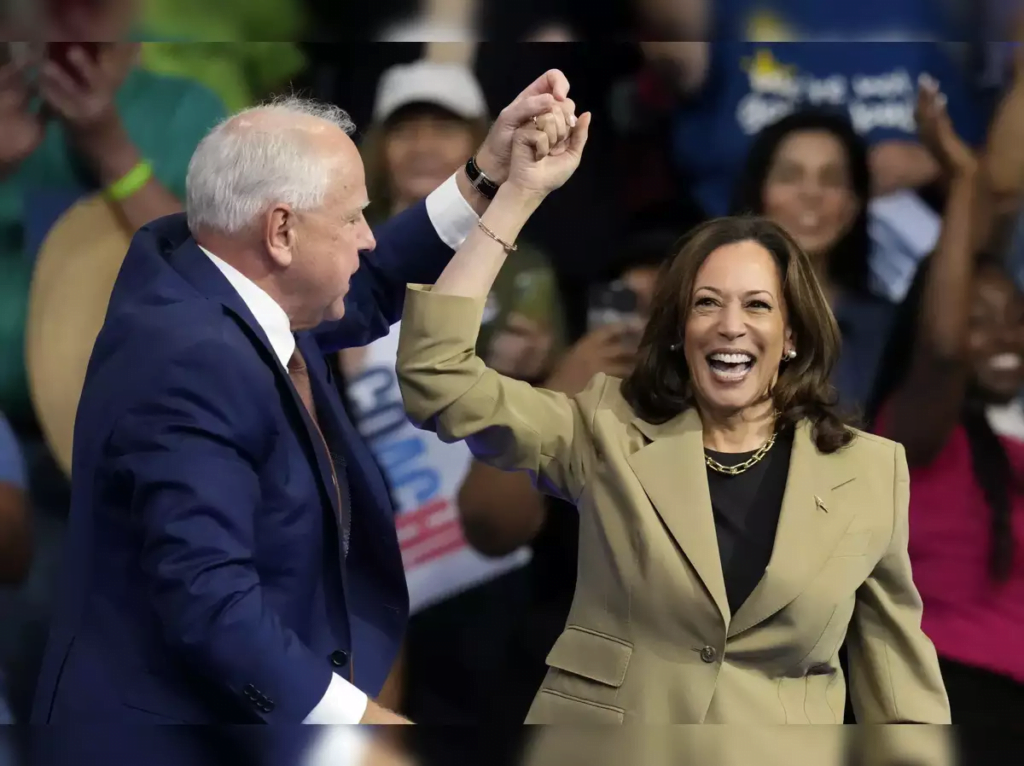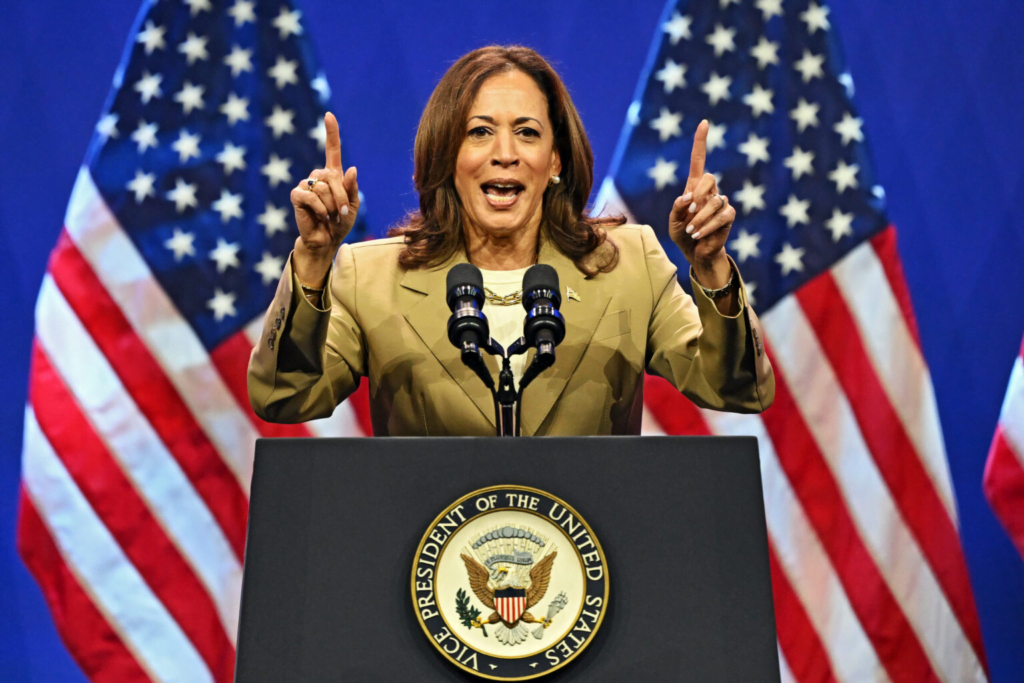Kamala Harris’s Rising Traction in the 2024 Presidential Election
Vice President Kamala Harris has gained substantial momentum in the 2024 presidential race, demonstrating significant progress in crucial battleground states that were previously considered strongholds for former President Donald Trump. Recent polling data shows Kamala Harris leading Trump by 5 percentage points in Arizona among likely voters (50% to 45%), a notable shift from earlier predictions. Additionally, she has managed to narrow the gap in Nevada and North Carolina, where she is now competitive with Trump.

In Georgia, Trump maintains a narrow lead, but Kamala Harris’s rising popularity indicates a dynamic shift in voter sentiment. The recent polls reflect that Kamala Harris has made substantial headway in key swing states such as Pennsylvania and Michigan. In Pennsylvania, Kamala Harris holds a slender lead of 1 percentage point over Trump, with 3% of voters still undecided. Similarly, in Michigan, Harris is ahead by 3 percentage points (49% to 46%) with 5% of voters undecided. If the election were held today, Kamala Harris would also narrowly defeat Trump in Wisconsin by a margin of 3 percentage points (49% to 46%).
These developments represent a dramatic turnaround from earlier in the campaign cycle, highlighting a surge in Democratic enthusiasm and support, particularly from younger, nonwhite, and female voters. This shift is significant given the previous dominance of Trump in these key battleground states.
kamala Harris’s campaign strategy is heavily focused on addressing pressing economic and social issues, including housing affordability and combating price gouging. This targeted approach appears to be resonating with the electorate, as evidenced by her improved standing in recent polls compared to Trump. Her emphasis on these issues underscores her commitment to addressing the concerns of everyday Americans and provides a clear contrast to Trump’s campaign platform.

Global Developments
Palestinian Initiatives at the U.N.:
On the international stage, notable developments are unfolding, particularly concerning the Palestinian push for action at the United Nations. The Palestinians are preparing to introduce a resolution at the U.N. General Assembly in September, inspired by a recent ruling from the International Court of Justice that declared Israel’s presence in the occupied Palestinian territories unlawful. Although the resolution will not be legally binding, it aims to establish a timeline for ending Israel’s occupation and advance the pursuit of a two-state solution.
Palestinian U.N. Ambassador Riyad Mansour has emphasized the resolution’s importance in galvanizing international support and spurring action towards peace. Despite this, Israeli Prime Minister Benjamin Netanyahu has vehemently rejected the court’s ruling and the proposed resolution, arguing that the territories in question are part of the Jewish people’s historic homeland. Netanyahu’s stance reflects his ongoing opposition to a two-state solution, which the U.S. supports, and his belief that a Palestinian state could become a base for attacks against Israel.
Ongoing Gaza Conflict:
The nearly year-long conflict between Israel and Hamas remains a critical issue, with significant casualties reported on both sides. The conflict erupted following a Hamas attack on southern Israel on October 7, which resulted in approximately 1,200 deaths and about 250 hostages taken. The Gaza Health Ministry reports that more than 40,000 Palestinians have been killed since the outbreak, though it does not distinguish between civilians and combatants.
Palestinian President Mahmoud Abbas has announced plans to visit Gaza and has called on international leaders, including U.N. Secretary-General Antonio Guterres and the leaders of the 15 Security Council nations, to join him. Abbas aims to draw global attention to the severe humanitarian crisis and to urge an end to the ongoing hostilities. His visit seeks to highlight the dire conditions faced by Gaza’s residents and to advocate for a ceasefire.
China-Belarus Relations:
In another significant development, China and Belarus are strengthening their bilateral relations across various sectors. Following a meeting between Chinese Premier Li Qiang and Belarusian Prime Minister Roman Golovchenko in Minsk, the two nations have agreed to enhance cooperation in trade, security, energy, and finance. They also plan to bolster collaboration in industrial supply chains and improve trade facilitation to reduce costs for both parties.

China remains a major trading partner for Belarus, ranking as its largest trading partner in Asia, with bilateral trade exceeding $8.4 billion last year. This continued partnership reflects the enduring and resilient relationship between the two countries, even amid shifting global dynamics and geopolitical changes.
These developments, both in the U.S. presidential race and on the international stage, underscore the evolving landscape of global politics and governance. kamala Harris’s rise in domestic politics and the ongoing international issues demonstrate the dynamic and interconnected nature of current global affairs.
Related Links:
Jerome Powell hints it’s time for a 25-point Fed rate cut
Wall Street: US Stocks Dip 1%, Dollar Rises Before Fed
6 Key Battleground States Poised to Influence US Election Outcome
Biden Issues 1 Menace to Putin: Halt Aggressions Beyond Ukraine in Joint Conference with Macron
2024 Election Polls: Trump Triumphs Over Biden Despite Conviction Impacting Reputation
Donald Trump’s Conviction Sets 1st U.S. Precedent, Following Global Trend
US-India Relations in Light of Modi’s Growing Influence
